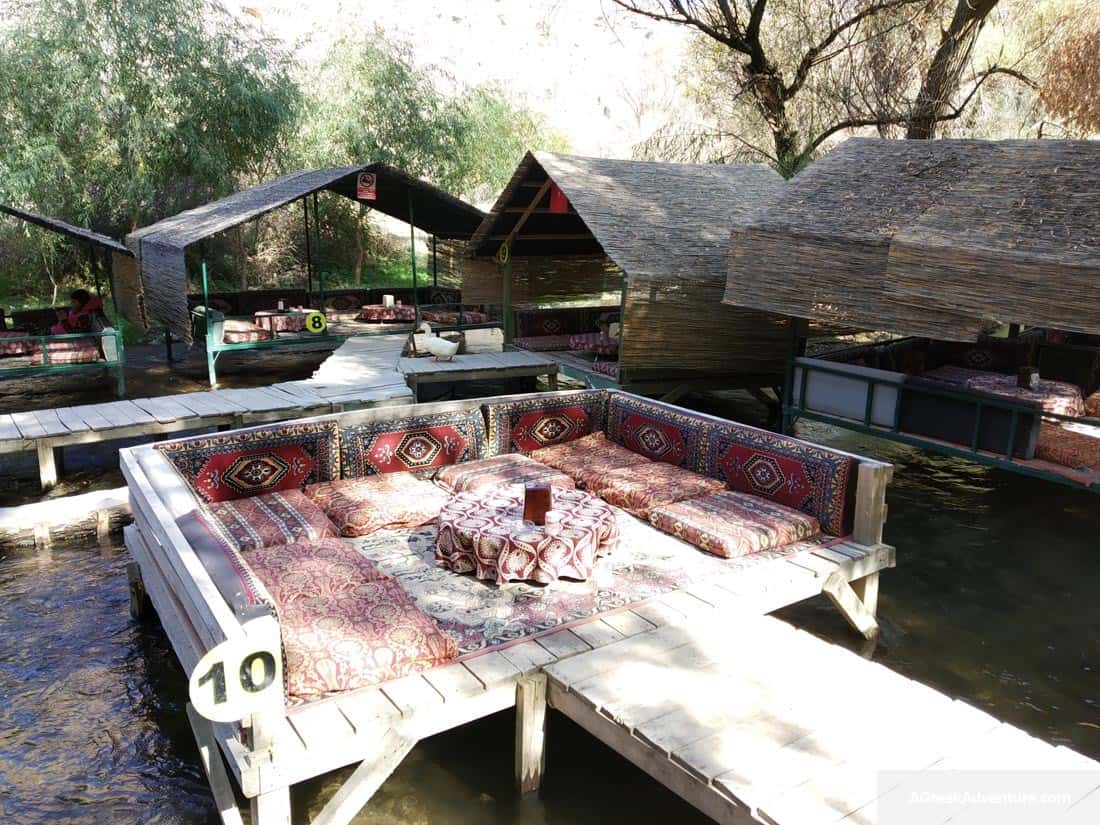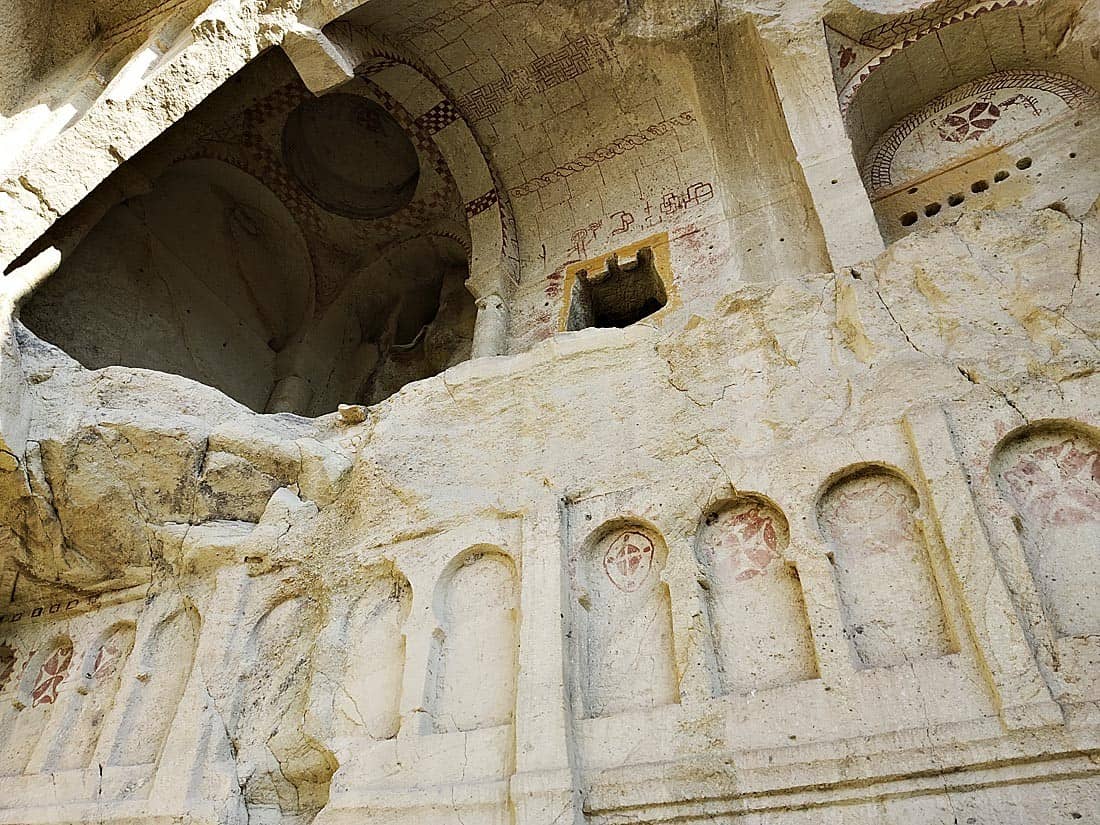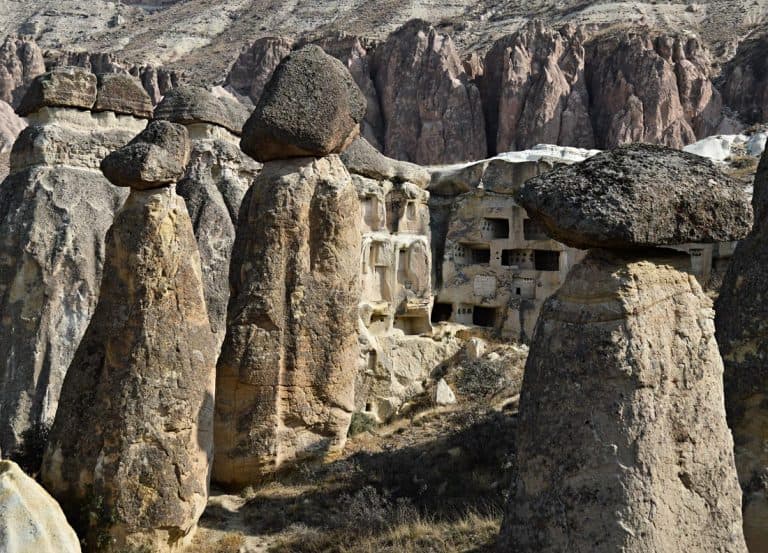Though less visited for tourism purposes, Cappadocia Turkey too is a hotbed of tourism. We did take a tour of the various places of interest in the nation a while ago.
Our trip was fantastic, to say the least.
Not only did we receive hospitable treatments throughout our stay but also got to learn of treasures we could only read of in history books.
This is not to mention the relatively lower costs of living.
The whole of our visit was centered in and on Cappadocia. Though little-known, this area is not without its fair share of attractions and resources.
It is for all practical purposes a semi-arid region. We found it tucked in central Turkey, with many attractions, both natural and man-made.
These ranged from deserts to caves to treacherous terrains and hiking trails.
Cappadocia, in a nutshell, is a place like no other.
Its ambiance and terrain drove us crazy.
As we walked around, we beheld breathtaking landscapes, and a host of fascinating features like excellent beaches, museums, white cliff waterfall, and palaces, to name but a few!
8 Top Attractions in Cappadocia Turkey
Even though we toured many areas and places of attractions, we found eight of them particularly amazing.
We have subsequently seen it worthwhile to devote the entire length and breadth of our discussions to unraveling the experiences we enjoyed while at the facilities.
We strongly advise you not to go to the area without prebooking the tours and all the activities you want.
There are tons of people that visit this remote place in the center of Turkey (Anatolia) and chances are you won’t find availability.
The two tours you must have, that cover the largest spectrum of things to see are:
- The “Green Tour”
- The “Red Tour“
Both these cover transportation, lunch, most or all of the entrance fees in various locations. Hotels are rather helpful to book ahead but don’t wait until arriving there.
Cappadocia Hot Air Balloon
As we have already explained, the entire Cappadocia region is replete with numerous natural landscapes.
Perhaps no other facility enabled us to peek at these wonderful resources better than the balloons.

A number of companies engaged in the facilitation of these rides. They covered the entire lengths and breadths of the region.
Our balloon ride lasted around 1 hour 30 minutes. We parted with $100-$175 to get a space in the balloons.
Throughout our trip, we experienced fair weather, clear visibility and the absence of obstacles.
As such, our balloon rides were safer than similar rides in many other parts of the world.
The balloons themselves peaked at around 900 meters from the ground level.

That was high enough to avoid all the common obstacles yet low enough to accord us unparalleled visibility.
We did have to put on some warm garments as the air above the ground was ordinarily cooler.
Stroll around the Red and Rose Valley
We did spend some of our time strolling around the Rose Valley.
This is a region within Cappadocia that comprises rocky formations of varying colors. They range from pinkish red to brown.
Throughout these rock formations are a network of caves and grottos. Once in a while, we popped into these caves to escape the sweltering heat and cool off.

The area, as we came to realize, is also awesome for matters of photography. Thus, we took many photos and videos, which we recorded for future references and memory. At sunset, the spectacularly bright rays of the sun beamed down to us.
These bombarded the numerous fairy chimneys, rock churches, and orchards that dot the landscape.

So breathtaking were the rays that we just could not get enough of it. After our hard day, we retreated to the nearby Rose Valley Hotel. While at the facility, we wined and dined to our fill.
Hiking Ihlara Valley and Melendiz River
As part of our trip, we did spend some time hiking at the Ilhara valley.
This one is a deep canyon that lies in between the Hasan and Melendiz mountains.

It was etched into place, supposedly, by the long winding River Melendiz for a period of thousands of years.
In all, it makes 26 bends and stretches along a 14-kilometer strip of land.
Christians, we did find out, cherish this location as they believe that it housed thousands of cave churches at a time when the Christian persecution was at its peak.
We hence recommend that you visit it if you are a Christian and would wish to make the most of your visit to Turkey.
We simply walked around the area. As we did so, we beheld numerous pistachio trees, poplars, and vineyards.
The soothing sounds of the waters of River Melendiz calmed and restored our psyche also.

We did arm ourselves with a camera that we used to capture every bit and moment of the trip.
Belisirma Village on the River
While still at the Ihlara Valley, we toured the picturesque village of Belisirma. This, we found tucked right at the center of the said valley.

The Melendiz River winds through this valley whereas some quirky restaurants sit on the bank exactly below the village.
In the restaurant are some low-seated tables, sometimes a foot or two above the running waters below.
This village is, on the whole, a pleasant lunchtime spot as we later found out.
We did realize that many tourists also preferred paying a visit to it during their Cappadocia Day Tours. While at the village, we got to taste some nice selections of the Anatolian cuisines.
This we did while at the same time enjoying the stunningly breathtaking scenery around.

To the north of the village lies the legendary Selime Monastery.
It is by far the largest and the most majestic of the several rock-cut religious building in the entire region.
As we hiked from one stretch to the village to the other, we also got a chance to look into the hermit caves, rock-hewn churches, and the troglodyte homes.
Selime Monastery
We have already explained above that this Selime Monastery is a majestic rock-cut religious building in Cappadocia.

A church of the size of a cathedral is hewn directly from the volcanic tuff.
Our walk into the facility revealed some original frescoes which reminisce the past days when Christianity had a foothold in the area.
Other than the frescoes, the monastery itself, exhibited signs of early civilizations like those of the Ottomans, Seljuk Turks, Byzantines, Early Christians, Romans, Persians, and the Hittites.
This monastery is divided into three sections by means of some two rock columns.
Apart from a peek into the history of Turkey’s past, our walk-in here gave us the opportunity to capture breathtaking shots.
Yet again, we did carry along a digital camera for the sake of taking the best quality photos.
By reason of its seclusions, we also found it a nice place to retreat to and relax.
Cappadocia Open Air Museum
An open-air museum, called Goreme Open-Air Museum also exists in Cappadocia. The museum, in a nutshell, is a vast monastic complex.
It comprises numerous refectory monasteries that are placed side-by-side each other.
Each monastery has its own church that is separate and distinct from the other one.

One beautiful aspect of this facility is that it is conspicuous enough to be noted by any other visitor.
In fact, it is the one we first spotted while in the area as it occupies the central part of the city. Moreover, it is also accessible from all directions easily.

This facility has, since 1984, been a UNESCO world heritage site.
Though open air, the entry to this facility comes at a cost. We had to part with 25 Turkish Lira to get in here.

It is better to make a visit here in the summer months as that is when the environmental conditions permit.

This is a fact we discovered later. Also, it is a good place to be either early morning or later afternoon, never midday.
The gaze of the Fairy Chimneys
‘Fairy Chimneys’ are so-called because they are natural landscape resources that are shaped much like the chimneys.

They do come about as tall and thin spires of rock that spring forth from the base of an arid drainage basin. In between these chimneys are some deposits of lava, ash, and basalt.
Recent spates of earthquakes and erosions have also contributed to shaping the landforms further.
On accounts of these, the rocks that have been left behind are softer and curvier.
They stretch from the Taurus in the south through to the Eastern Black Sea coastline.
Of all the attractions in the area, perhaps none other was as suited for sightseeing and photography as were the Chimneys.

Owing also to the fact that the area was less congested, it is a place we found pretty great for retreats and unwinding.
The midday got too hot for us. That is why we recommend a visit either early morning or later in the afternoon.
A Peek at the Cappadocia Caves
Also present in Cappadocia are some caves. We found them in the Goreme region. Here is the Uchisar Castle area, with many settlements, all carved into rocks.

These caves are ordinarily ancient and date far back in time.
They are thought to have housed Christians in their escape from their incursions by pagan enemies.

Quite a number of them have been converted into hospitality accommodation facilities.
As we did so, we came across some wall paintings and abandoned abodes. Also available there were hundreds of pigeon houses that came to be as a result of rock carvings.
A Tour in the Derinkuyu Underground City
Cappadocia comprises 36 underground cities, of which this Derinkuyu is the deepest.
So remarkable is this underground city that it is a spectacle to behold indeed. In total, it has some five levels that are stacked one underneath the other.

Some staircases lead you to the deepest depths.
Local authorities here estimate that the city can accommodate a whopping 20,000 residents at a time.

Some vertical staircases led us from the ground level to the basements and underground rooms.
We found it particularly awesome for peeking into the history of the region.
All factors considered, we found it a nice place to retreat to for the purposes of archaeology.
That is because the city has many unexplored areas and attractions.
Where to Stay in Cappadocia? In Goreme
Make sure to find accommodation in one of the cave hotels of Goreme. The village is in the right location for all the sightseeing you want to do in Cappadocia.
It is a small, quiet, picturesque with plenty of options for local food and some international. Do not expect any vivid nightlife options. There are no clubs and such. Your options are good food, coffee, and tea.
We stayed at the Grand Cave Suites, which is considered one of the best with the best view of the valley and the village.
We took one of the “corner” rooms, that had a dazzling view.

How To Get To Cappadocia Turkey?
Chances are that you will enter Turkey via Istanbul as it has the nation’s largest airport.
The distance from Istanbul to Cappadocia is roughly 794.8 km. You will take 1hour 25 minutes to get to the region via air, and 9 hours 1 minute to do so by road.
The cost of transportation here is lower than that in much of Western Europe. If you come from a developing nation, these costs may still be too high.
When Visit Cappadocia Turkey?
Though you are at liberty to spend whichever amount of time you want to here, a minimum of 3 days would guarantee a fruitful visit. 72 hours is indeed sufficient time to gaze at the numerous caves, go for hikes, walk around, and even take a balloon ride!
By far the best time to get here is the period stretching from April to June or September to October.
These days are warmer and more habitable. While in your stay in the area, you are advised to keep off the valleys and the unlit roads that strew across the villages, especially in the evenings.
When do you now plan a visit? What more support, in your opinion, should we give to facilitate your entry and travels here?
Could it be that there are issues we have not given undue attention? Let us hear from you. We are very passionate about the success of the readers of our posts.
Read our thorough post for Istanbul, since that is the landing city before getting to Cappadocia.
Also read 10 Best Coldest Countries In Europe For Winter Lovers.
